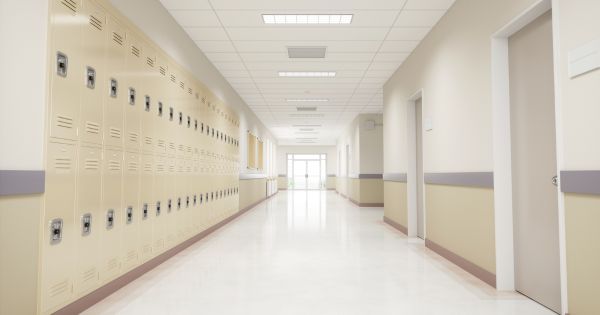As educational institutions worldwide strive to create safe and healthy learning environments, effective cleaning of the educational sector also becomes essential. With schools reopening in many countries after the total lockdown period of the global pandemic, it has become increasingly important for educators to understand how best to keep their educational spaces clean and sanitized.
In this article, we will discuss some of the top tips for effective childcare cleaning to help ensure students have access to safe and hygienic learning spaces.
By implementing routine procedures such as daily disinfection, properly ventilating classrooms, and providing adequate handwashing facilities throughout school campuses, administrators can significantly reduce the risk of transmission of infectious diseases between students and staff. Furthermore, developing an appropriate cleaning plan tailored to each unique location allows organizations to effectively address potential health hazards while protecting their resources efficiently.
Finally, by following these expert-recommended guidelines on childcare facility cleaning practices, teachers and other personnel involved with maintaining educational buildings can ensure they are doing everything possible to provide their students with a secure environment conducive to learning. This article will outline five key steps towards achieving successful education cleaning outcomes and provide useful advice on achieving those goals.

Curtailing Contagion Through Sanitization
Implementing an effective education cleaning policy is essential to break the chain of infection. Disinfection is a key element of this process, as it helps eliminate infectious agents from surfaces and other materials. To ensure that all areas are adequately cleaned and disinfected, a comprehensive plan should be created which outlines methods for identifying potential contamination hotspots, proper techniques for applying disinfectant solutions, and when additional training may be necessary.
The primary focus of any successful education cleaning program should be on the effectiveness of the application of disinfectants. Quality products are important but equally important in how they are used – appropriate dilution concentrations must be followed to achieve maximum effect. Additionally, contact time with surfaces should not be overlooked; many surface-active ingredients require at least 10 minutes before being wiped off or rinsed away. Furthermore, workers need to ensure that their protective equipment (gloves, masks, etc.) is properly utilized, thus avoiding cross-contamination between different areas within the childcare setting.
Finally, staff must understand what type of product they should use depending on the situation: there are general-purpose cleaners designed for everyday uses, while other more powerful chemicals can help tackle specific issues such as mold spores or bacteria outbreaks. Ensuring these fundamental principles are understood and applied correctly will result in an effective system preventing disease spread throughout educational facilities. This knowledge should then form the basis for specific training related to education cleaning practices required by staff members responsible for keeping schools safe and healthy environments for students and staff alike.
Educational Cleaning: A Specialized Approach
In order to effectively clean educational environments, custodians and caretakers need to be trained in the proper techniques. A successful program of education cleaning requires more than just a few hours of instruction; rather, ongoing training should take place for workers to remain up-to-date with the latest trends and developments in the field. Furthermore, caretakers need to understand not only what needs to be done but also why certain procedures are being followed. This can help ensure that safety protocols are properly followed while tasks are carried out efficiently.
To this end, workshops and seminars should be held regularly wherein topics such as chemical handling, infection control measures, equipment operation and maintenance, hazardous material disposal methods, and other relevant subjects can be discussed in detail. Hands-on demonstrations can help educate staff members so they better comprehend how best to use available tools when performing their duties. Additionally, video tutorials covering various education cleaning aspects can supplement traditional classroom learning sessions.
Ultimately, offering appropriate training will enable personnel responsible for maintaining educational facilities to carry out their work quickly yet safely – creating an environment where students feel secure while at school.

Safe & Efficient Cleaning Methods
Cleanliness is an essential component of a safe and comfortable childcare environment. Safety should be the primary concern for staff and students when performing education cleaning. In order to ensure effective yet safe cleaning in any educational setting, some key considerations need to be taken into account.
The first consideration when undertaking education cleaning is to use only approved products. All cleaners used must meet appropriate standards for quality, potency, and toxicity levels. It is also important to select disinfectants with broad-spectrum activity against bacteria, fungi, and viruses as these pathogens can cause various illnesses if they go undetected or unaddressed by inadequate cleaning practices. Furthermore, all surfaces being cleaned should be wiped down using disposable cloths which then get thrown away after each use so as not to spread infection between areas or individuals.
Finally, personal protective equipment (PPE) should always be worn during education cleaning tasks. This includes items such as gloves and face masks which will protect personnel from exposure to hazardous chemicals or airborne particles during sanitation activities. It is also important to consider potential hazards in the area being worked on; this could include broken glass, sharp edges or slippery surfaces that may pose additional risks while working in close proximity with them. By following these guidelines and wearing PPE correctly while conducting education cleaning duties, one can help create a safer environment for everyone involved without compromising on cleanliness results.
In light of this information regarding effective yet safe techniques for childcare cleaning services, formal frameworks must now be established in order to guarantee consistent, high-quality outcomes every time, regardless of changing environmental factors outside of our control.
Establishing Guidelines For Exceptional Workmanship
Effective education cleaning requires the establishment of formal frameworks that promote quality. These frameworks should be tailored to individual school environments, taking into account such factors as area size and type of surfaces to be cleaned. An effective framework will help ensure that all tasks are completed in a timely manner, with high standards maintained throughout. Achieving this involves clearly defining roles and responsibilities for each staff member involved in the process, from janitors to supervisors. This allows everyone to understand their role in the operation, reducing confusion and mistakes.
In addition, it is essential to establish policies and procedures which guide cleaning activities on an ongoing basis. All staff members must be familiar with these processes to perform their duties safely and effectively. Finally, experienced personnel should conduct regular inspections to monitor progress and identify areas where improvements may need to be made. By implementing these measures, schools can ensure that their learning environment remains clean, safe, and hygienic. The presence of friendly & reliable faces adds a personal touch that builds trust among students and faculty.

Welcoming & Dependable Faces
Having developed a formal framework for quality childcare cleaning, the next step is to ensure that all of the necessary services are delivered professionally. Any successful educational facility needs to have friendly and reliable faces at its disposal who can provide effective and efficient cleaning services.
The qualities of a good education cleaner include the following:
- Professionalism: The ability to act appropriately and courteously with colleagues and customers alike.
- Attention to detail: Cleaners must pay close attention to every small aspect of the job, ensuring that no areas are missed or overlooked while they work.
- Punctuality: Being on time is key when it comes to providing timely service.
- Communication skills: Education cleaners should be able to effectively communicate with staff members, parents, and students about any questions or requests related to their job.
Education cleaning requires a personable yet professional approach from your team, someone who understands the importance of creating an environment conducive to learning within which everyone feels comfortable and secure. In order for this level of trust between clients and cleaners to be established, there must be consistency in terms of delivery standards across all schools, universities, and childcare facilities involved. You can seek help from the North Coast Commercial Cleaners – Sunshine Coast QLD. They are professionals with more than a decade of experience. With experienced personnel based on the Sunshine Coast, they offer comprehensive education cleaning solutions tailored to each client’s needs.
 Kaboutjie SA Mommy Blogs by Lynne Huysamen
Kaboutjie SA Mommy Blogs by Lynne Huysamen




